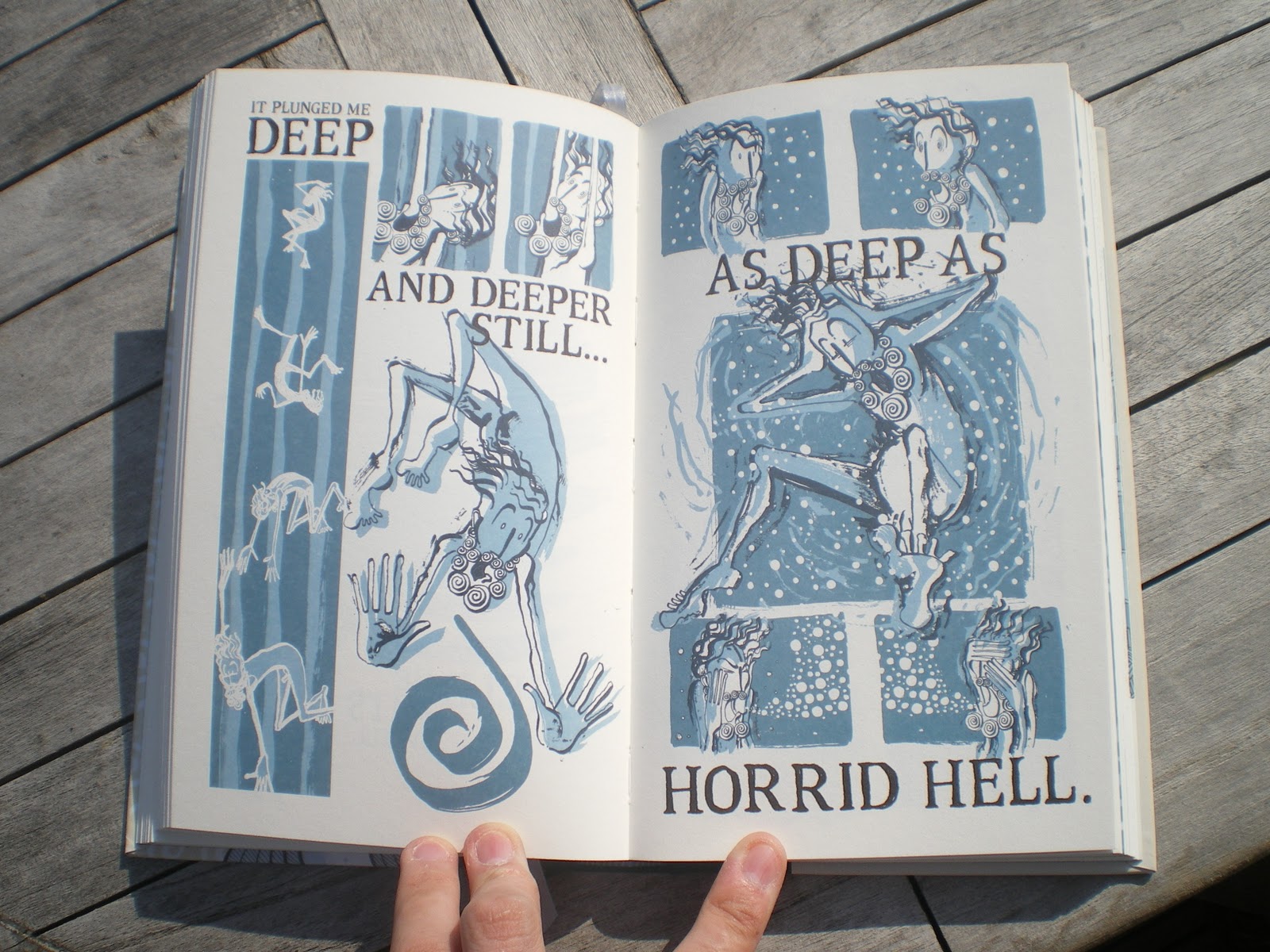| Book Cover of Modern Version |
| Victorian Era Rendition of Original |
Nick Hayes' The Rime of the Modern Mariner combines beautifully drawn, stylistic art and an accompanying poem to create a compelling graphic novel. The piece is, of course, a modern interpretation of Rime of the Ancient Mariner, by the Romantic Era poet Samuel Taylor Coleridge.
A little background on the original piece:
 |
| Samuel Taylor Coleridge |
Samuel Taylor Coleridge was among the first poets of the Romantic Era. Fast friends with William Wordsworth, the two were the pioneers of the first generation of Romantic poets (later to give way to the second generation: Byron, Shelley, Keats).
Hold on one moment. I need to adjust my cravat and put on my tweed coat. There we are, much better. Wait! Where's my pipe? Okay, got it, we're good to go.
Lot's of Context (Because I love the Romantic Era):
Coleridge was known for his interest in the supernatural. Some might say he was a very early incarnation of those who sought out the "psychedelic" in the sixties. If you want some fairly succinct and rather definitive evidence of his proclivities in this area, read his poem, Kubla Khan. Crazy, right? But cool, too. Wordsworth and Coleridge actually had a falling out over this type of poetry. Some scholars believe Coleridge was hitting the ole' poppy seed pretty hard. Regardless, Rime of the Ancient Mariner, first published in 1978, is one of his most famous works, and combines the imagery of nature indicative of the early Romantics, and Coleridge's interest in the supernatural. The story of the poem, which you can (and should) read here, is about an old man, who stops a young man on his way to a wedding to tell him a story. The story is of a sea voyage, wherein the old main, the "mariner" was a member of the crew. He got bored and shot an albatross, an act that--since Coleridge's poem--has been universally shunned by superstitious seamen. Because the storyteller had committed such a senseless act, he and the rest of the crew are subjected to extreme peril: storms, windless days, no food and water, general badness. Everyone dies but the speaker, who undergoes some intense visions and experiences a mystical spiritual journey. He eventually realizes he must relish life rather than shoot at random birds, and he gets to shore and decides he needs to tell others his tale, wherein he runs into the young man on his way to the wedding.
Read more about Coleridge at poets.org
The Modern Version:
Nick Hayes' version is also a moral story, but it is significantly changed. In The Rime of the Modern Mariner, a successful businessman who lives his life with an overdependence on materialism and an apathy towards things like nature and love runs into the mariner. The mariner tells a story that starts similarly to Coleridge's version. He boards a ship, goes to sea, and shoots an Albatross out of boredom. However, the consequences of this take a different shape. The natural disasters take form in giant piles of garbage in the water, and other problems suggestive of a throw away culture of excess. The Mariner undergoes a change of heart through a process of an extremely bizarre spiritual journey, complete with weird art to complement the tone. That's not a criticism - I like the weirdness, it is very much in the spirit of Coleridge.
You can read a nicely comprehensive commentary on Rime of the Modern Mariner by Nick Hayes by clicking here.
 |
| Artwork from the graphic novel showing the disaster of human waste |
 |
| Add caption |
The Guardian provides an interesting, mostly positive review.
Perhaps the most important difference between the original poem and the modern one is the ending.
In Hayes' version the listener laughs off the story and goes back to his materialistic life, leaving the Mariner alone. The lines of that scene read:
1 comment:
Marty, I also am a fan of the Romantic Era. I think this would be a great text to use when encountering reluctant readers. This text could be the jumping point for students to tackle more complex works, perhaps the original poem. I see a lot of value in this text.
Post a Comment